Aircraft progress before and after World War II
It followed the trend it was following before it, or so we can see in data from NACA (What NASA used to be)
In its present state, and even considering the improvements possible when adopting the higher temperatures proposed for the immediate future, the gas turbine engine could hardly be considered a feasible application to airplanes mainly because of the difficulty in complying with stringent weight requirements imposed by aeronautics. The present internal-combustion engine equipment used in airplanes weights about 1.1 pounds per hp, and to approach such a figure with a gas turbine seems beyond the realm of possibility with existing materials.
National Academy of Sciences, Committee on Gas Turbines (June 1940)
You could say that this refers to propeller aircraft, not to jet engines, so there's something missing. This is intentional: propeller aircraft were far more used during the war, and jet engines didn't appear because of it:von Ohain and Whittle did their work before. What WWII probably did was to accelerate the development of jet engines, but since there were not many jet engines prior to the war, we don't know the pre-war improvement trend for jet engines (But maybe I can look into the pre-war designs to see if a trend can be extracted). We could do a during-war jet engine trend, which may be an interesting topic for a future post.
The point here is that we could have expected a sudden increase in performance due to increased demand for both propelled-driven aircraft and related technologies during the war effort, but that didn't happen.
 Figure 1: Trends in maximum speed of propeller-driven aircraft
Figure 1: Trends in maximum speed of propeller-driven aircraft
 Figure 2: Trends in stalling speed of propeller-driven aircraft
Figure 2: Trends in stalling speed of propeller-driven aircraft
 Figure 3: Trends in wing loading of propeller-driven aircraft
Figure 3: Trends in wing loading of propeller-driven aircraft
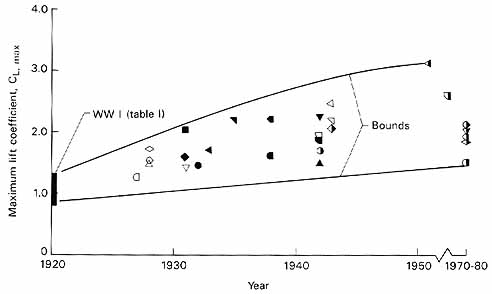 Figure 4: Trends in maximum lift coefficient of propeller-driven aircraft
Figure 4: Trends in maximum lift coefficient of propeller-driven aircraft
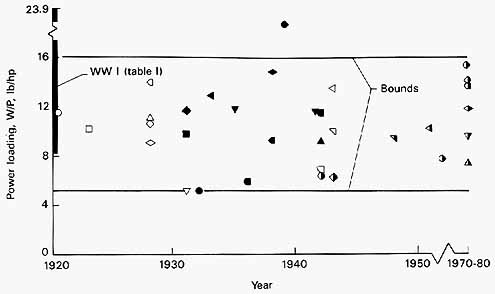 Figure 5: Trends in power loading of propeller-driven aircraft
Figure 5: Trends in power loading of propeller-driven aircraft
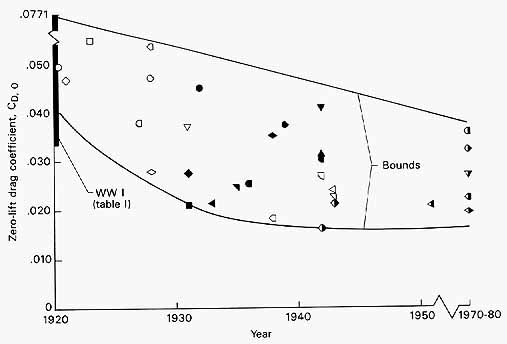 Figure 6: Trends in zero-lift drag coefficient of propeller-driven aircraft
Figure 6: Trends in zero-lift drag coefficient of propeller-driven aircraft
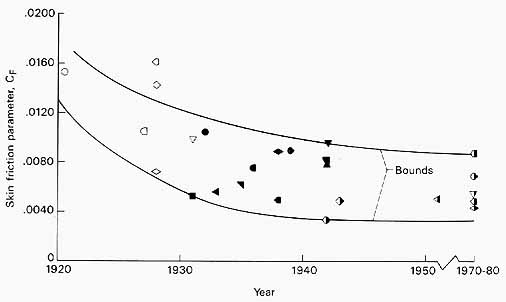 Figure 7: Trends in skin-friction coefficient of propeller-driven aircraft
Figure 7: Trends in skin-friction coefficient of propeller-driven aircraft
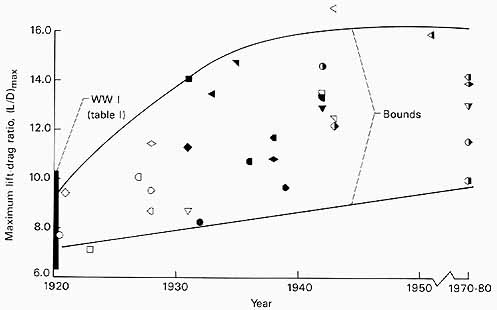 Figure 8: Trend in maximum lift-drag ratio of propeller-driven aircraft
Figure 8: Trend in maximum lift-drag ratio of propeller-driven aircraft
This one is not from NACA, but still shows the same idea:
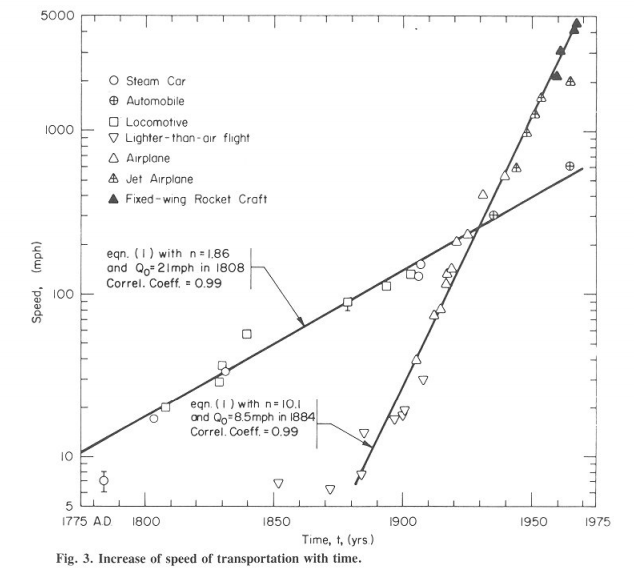 Figure 8: Trends in speed of transportation
Figure 8: Trends in speed of transportation
EDIT: Now, plots for jet engines!
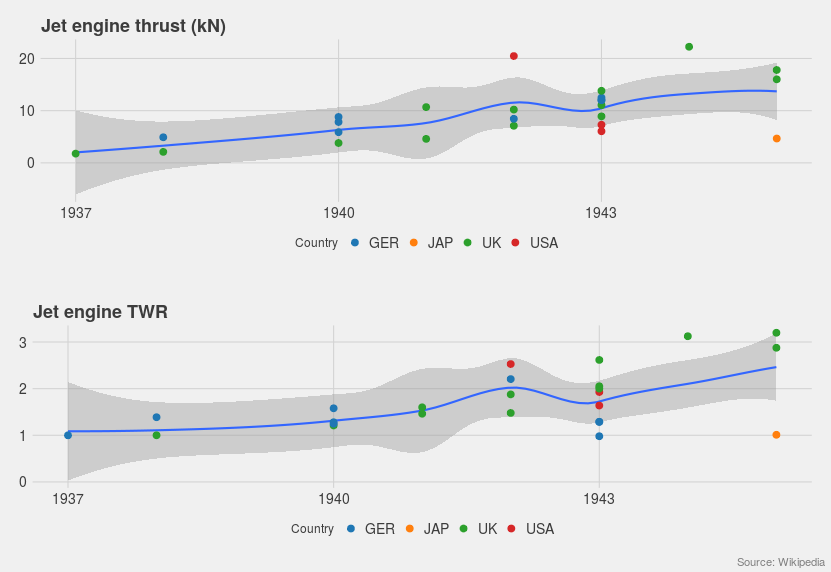 Figure 9: Trends in jet engines, WWII
Figure 9: Trends in jet engines, WWII
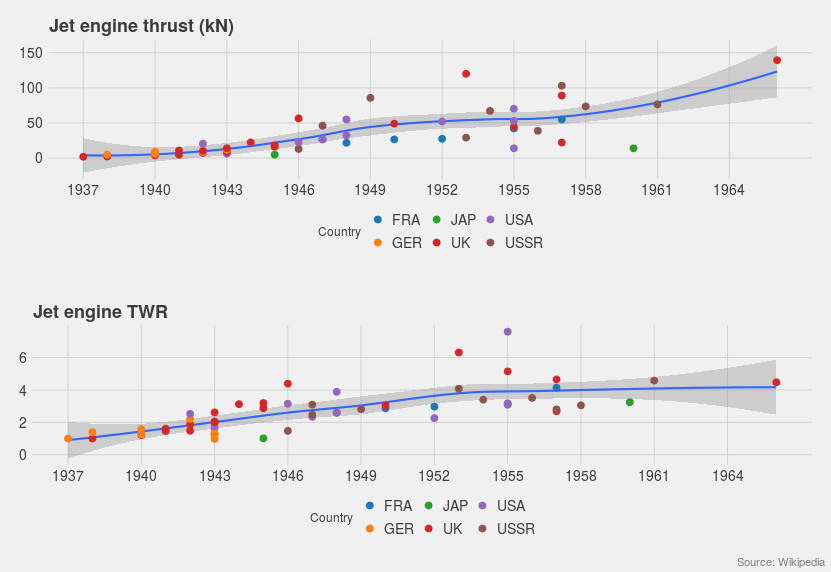 Figure 10: Trends in jet engines
Figure 10: Trends in jet engines
Sources
Loftin, L. K. (1985). Quest for performance: The evolution of modern aircraft (No. 468). Scientific and Technical Information Branch, National Aeronautics and Space Administration.
Lienhard, J. H. (1985). Some ideas about growth and quality in technology. Technological Forecasting and Social Change, 27(2), 265-281.
Appendix: Data table
Sort of complete until 1960. From there it needs work. I also have the efficiencies of the engines, but that is so far a bit incomplete. For the HeS1 and WU1/2 I assumed a TWR of 1 (There's a book saying that's the TWR Whittle was getting), and I assumed the WU1 weighted less than the WU2, so it would be less powerful.
These jets are only turbojets, not turbofans. The thrusts are dry, not 'wet' (afterburning) figures.
Comments from WordPress
- The Non-Non Libertarian FAQ | Nintil 2016-03-24T20:14:20Z
[…] engines: I wrote about that here, and here. Not invented by government, but improved after invention by […]
Citation
In academic work, please cite this essay as:
Ricón, José Luis, “Aircraft progress before and after World War II”, Nintil (2016-02-09), available at https://nintil.com/aircraft-progress-before-and-after-world-war-ii/.